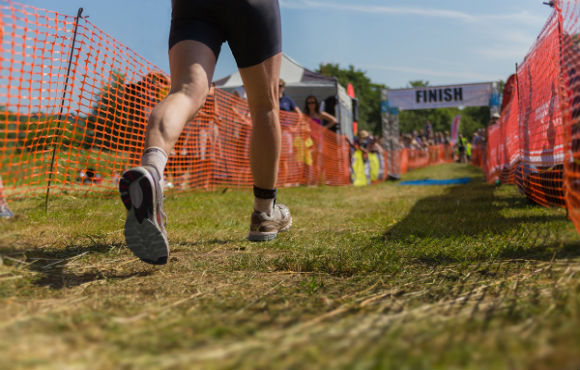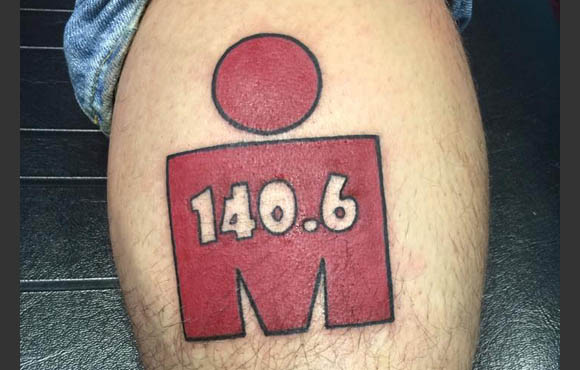With investments in one-on-one coaching, nutrition, bike repairs, gym membership fees, race fees and more, the journey towards a 2.4 mile swim, 112 mile bike and 26.2 mile run can run you at least $2,000 to $5,000. (But the 140.6 bumper sticker and endless boasting are priceless).
But do these bragging rights really have to come at such a steep price? I completed my first full-distance triathlon while on a very tight budget as I moved in to my first apartment—and then moved again--and juggled student loans.
These seven money-saving tips made it possible.
Pick Your Coach
1 of 8
Let's face it, at the end of the day, you just want to finish the race. With that in mind, cut the bells and whistles out of your training ideals and search for an affordable, local coach. Proximity to your coach is important for one-on-ones and group training days. You don't want to spend the majority of your budget on tolls or gas racing to and from work.
Also, be wary of coaches who will charge you every time you want to talk to them. Even better, post in local triathlete Facebook groups to solicit recommendations for a good coach in your area. Not everyone is sponsored; some triathletes may be in the same financial situation as you, and therefore may recommend an effective, affordable coach. Don't be afraid to negotiate budget or payment plans with coaches as well.
Find:
Your Next TriathlonGo Easy on the Bike
2 of 8
The biking leg is easily the most expensive part of the race. In addition to biking shorts that can start at $40, cyclists must also consider the helmet, gloves, glasses, biking shoes, pouches for gels, lights, pump, spare tubes, aero bars--oh, and the bike itself. Unless you are a pro athlete that is sponsored, you don't need a bike that costs over a thousand dollars. Trek is an affordable brand that, with a few tweaks, can be transformed from a road or hybrid bike to a race bike. In fact, my bike cost $600 and is still standing after six months of training and a 15-hour race day.
As for a good bike fit, there is no need for a machine-driven process. Seek out a local company with a solid reputation and the fitting will suffice. If it is still too expensive, negotiate a payment plan. Here's another hint: Remain loyal to a local bike shop, and they may offer you hookups in the future.
Find:
Your Next TriathlonChoose a Race
3 of 8
For first-timers, check out races that are close by to cut on transportation costs as well as bike shipping and hotel expenses. You don't need to add stress to your beginner race jitters.
Also, keep in mind that there are some brands that offer full-distance triathlons that start at $250. Sure, you won't have tons of spectators, confetti or Mike Reilly saying your name at the finish line, but the bragging rights and chafing will be about the same.
Find:
Your Next TriathlonMonitor Nutrition
4 of 8
It's easy to get caught up in "top notch" food brands or supplements that offer supreme results. At the end of the day, if an athlete is not putting forth maximum effort, expensive organic free-range fish isn't going to cut it regardless. There were days where I ate food that deviated from my training plan because it was cheaper (sorry, coach). Ultimately, I couldn't afford paying three quarters of my paycheck to expensive fancy supermarkets. So, I went to a cheaper alternative store--Publix, in this case. Eat clean, eat healthy and eat within your budget. Hell, enjoy some pizza here and there if you want.
Find:
Your Next TriathlonReplace Massages with Foam Rolling
5 of 8
Now, I'm not saying sports massages aren't necessary--they absolutely are. But the costs of a sports massage once a month combined with last minute bike repairs, paying a coach, nutrition and everything else not race-related can take a toll on bills.
While massages can range from $70 to $100 per month, a foam roller is a one-time cost of $18. Sure, you won't get the essential oils and tough love treatment, but you can use that saved money to buy a massage one week before your race, like I did. Dim the lights, play some monk chanting music and foam roll away. It may hurt so good, but your budget won't.
Find:
Your Next TriathlonEliminate Blowouts and Manis/Pedis
6 of 8
Ladies, this one is for you. There is absolutely no reason to get your nails done when you will be regularly swimming in a chlorine-filled pool or the ocean. Those babies will chip right off and your money will be wasted. As for getting your hair done, forget it--it's useless. Plus, there's a good chance you won't even have the energy to focus on your appearance as much.
Find:
Your Next TriathlonScore Discounts
7 of 8
Lastly, subscribe to emails to sport equipment stores in case you need training gear such as biking shorts or running shoes. Of course, you may have to spend more than usual due to the extremities of this type of race, but it's better than suffering in pain. Same with tri-suits and wetsuits--there are definitely affordable options, but be sure there is the right amount of padding and tight fit to be comfortable the week before training and race day. After all, this is your moment. Bask in it.
FIND GEAR DISCOUNTS: https://gearup.active.com/
Find:
Your Next TriathlonAbout the Author







Discuss This Article